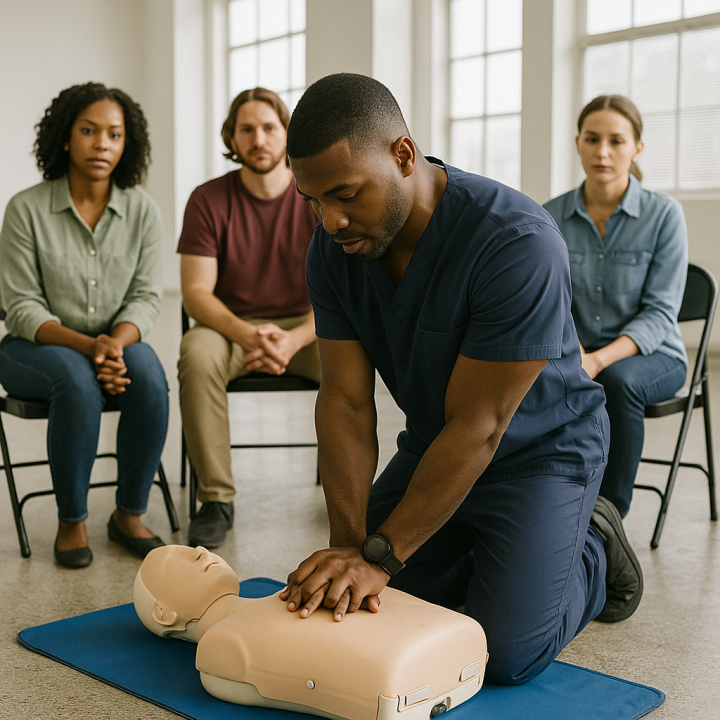Train your body to act fast—without needing to think.
When someone collapses from sudden cardiac arrest, every second matters. Your brain might freeze—but your body shouldn’t. That’s where muscle memory comes in.
In high-stress situations like a real-life CPR event, you want your body to automatically begin compressions, call for help, and use an AED. That kind of fast, precise reaction is built through repetition, realism, and purposeful practice.
Let’s break down how to build muscle memory for CPR so that you can act with confidence when it counts.
1. Practice, Then Practice Some More
The key to muscle memory is consistent repetition. Whether you’re a healthcare provider or a bystander trained in CPR:
- Practice compressions regularly on a manikin or pillow
- Use the correct rate (100–120 compressions/min) and depth (2–2.4 inches for adults)
- Focus on full recoil and minimal interruptions
Just like learning to play an instrument, CPR becomes easier and more natural the more you do it.
2. Use Realistic Training Tools
Muscle memory builds best when training mimics real life. Use tools like:
- High-fidelity manikins with feedback (rate, depth, hand position)
- AED trainers that simulate voice prompts
- CPR feedback apps that track performance
Training in realistic environments prepares your body to respond effectively in real ones.
3. Train in High-Stress Scenarios
Real cardiac arrests are chaotic. Simulating stress in practice helps your muscle memory kick in when your brain is overwhelmed. Try:
- Timed drills with pressure
- Team scenarios with noise and distractions
- Running drills in full clinical gear (if applicable)
Stress exposure in training leads to poise in emergencies.
4. Build Mental Muscle Memory Too
Visualize yourself performing CPR. Imagine:
- Finding a person unresponsive
- Calling for help and starting compressions
- Using an AED confidently
Mental rehearsal can strengthen neural pathways just like physical practice—and it’s something you can do anywhere.
5. Refresh Your Skills Regularly
Muscle memory fades without use. Stay sharp by:
- Taking CPR refreshers every few months
- Practicing brief drills on your own or with a partner
- Reviewing CPR videos or guidelines often
Some programs now recommend quarterly or monthly refreshers, rather than just biannual training.
6. Incorporate Feedback Every Time
Muscle memory is only helpful if it’s correct. Practicing bad technique locks in bad habits. Use:
- Real-time feedback manikins
- Peer review
- Post-drill debriefs
Refining your movements ensures your automatic response is effective.
Final Thoughts
Muscle memory means your body remembers—even when your brain hesitates. In CPR, that can make the difference between life and death.
So train often, train smart, and trust the power of your preparation.
Because when the moment comes, you don’t rise to the occasion—you fall back on your training.


